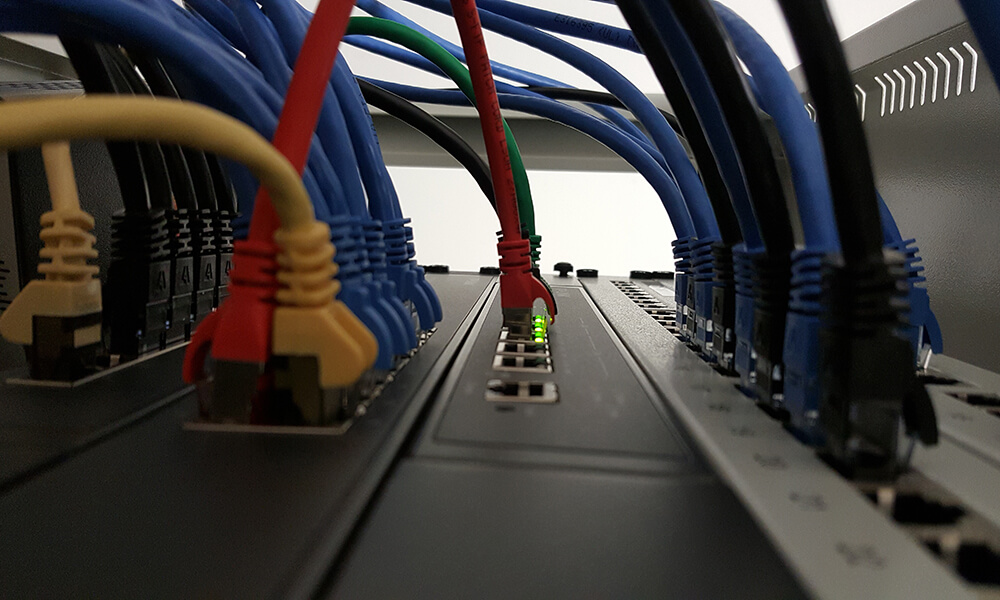Multimode Fiber Grades: OM1, OM2, OM3, OM4, and OM5
Multimode fiber plays a crucial role in short-range network connections, especially in data centers, enterprise local area networks (LANs), and campus networks. As technology evolves, different grades of multimode fiber, namely OM1, OM2, OM3, OM4, and OM5, have been developed to meet various performance requirements. Let’s take a deep dive into these fiber grades to understand their characteristics and how they compare
What is Multimode Fiber?
Multimode fiber (MMF) has a larger core diameter compared to single – mode fiber, typically 50 or 62.5 micrometers (µm). This allows multiple light rays (modes) to propagate simultaneously through the core. Due to its ability to support lower – cost light sources like Light – Emitting Diodes (LEDs) and Vertical – Cavity Surface – Emitting Lasers (VCSELs), and its relatively larger tolerance for connector misalignment, MMF is cost – effective for short – distance applications. However, the multiple modes of light can cause modal dispersion, which limits its transmission distance and bandwidth compared to single – mode fiber.
Grades of Multimode Fiber Comparative Overview
| Fiber Grade | Core Diameter (µm) | Jacket Color | Modal Bandwidth (MHz·km) at 850 nm | Max Data Rate | Max Transmission Distance at Max Data Rate | Typical Light Source |
|---|---|---|---|---|---|---|
| OM1 | 62.5 | Orange | 200 | 1 Gbps | 275 m | LED |
| OM2 | 50 | Orange | 500 | 1 Gbps | 550 m | LED |
| OM3 | 50 | Aqua (Light Green) | 2000 | 10 Gbps | 300 m | VCSEL |
| OM4 | 50 | Aqua (Light Green) | 4700 | 10 Gbps | 550 m | VCSEL |
| OM5 | 50 | Lime Green | 28000 (approx. combined for multiple wavelengths) | 100 Gbps (using SWDM) | 150 m (for 100 Gbps SWDM) | VCSEL |
OM1 Fiber: OM1 is one of the earliest – deployed multimode fibers. It has a core diameter of 62.5 µm and is often recognized by its orange – colored jacket. With a modal bandwidth of 200 MHz·km at 850 nm, OM1 is mainly suitable for 100 Mbps Ethernet applications over short distances. For 1 Gbps Ethernet, it can reach up to 275 meters (Source: ISO/IEC 11801 standards). Since it uses LED light sources, which are relatively inexpensive, OM1 was popular in early – stage LANs. However, as data rate requirements increased, its limitations became more apparent.
OM2 Fiber: OM2 fiber has a smaller core diameter of 50 µm compared to OM1, while still maintaining an orange – colored jacket. Its modal bandwidth at 850 nm is 500 MHz·km, which allows for better performance than OM1. OM2 can support 1 Gbps Ethernet over longer distances, up to 550 meters. Similar to OM1, it also uses LED light sources. Although it offers improved performance over OM1, OM2 is gradually being phased out in modern high – speed network deployments, especially as demands for 10 Gbps and higher speeds have become more prevalent.
OM3 Fiber: OM3 is a significant upgrade from OM1 and OM2. It is optimized for use with VCSEL light sources and has a 50 – µm core diameter with an aqua (light green) – colored jacket. The most notable feature of OM3 is its high modal bandwidth of 2000 MHz·km at 850 nm. This enables it to support 10 Gbps Ethernet up to 300 meters, making it a popular choice for data centers and enterprise networks that require high – speed, short – range connections. For example, in a data center environment, OM3 can be used to connect servers to switches within the same rack or between adjacent racks (Source: IEEE 802.3 standards related to Ethernet over fiber). Additionally, OM3 can support 40 Gbps and 100 Gbps Ethernet over shorter distances, around 100 meters, when used with appropriate Multi – Fiber Push – On (MPO) connectors.
OM4 Fiber: OM4 is an enhanced version of OM3. It shares the same 50 – µm core diameter and aqua – colored jacket. The main improvement of OM4 lies in its significantly higher modal bandwidth of 4700 MHz·km at 850 nm. This increased bandwidth allows OM4 to support 10 Gbps Ethernet over a longer distance of 550 meters compared to OM3’s 300 – meter limit. For higher data rates like 40 Gbps and 100 Gbps Ethernet, OM4 can achieve up to 150 meters when using MPO connectors. In high – density data center environments where longer link lengths are required for 10 Gbps connections, OM4 provides a more reliable solution. It also offers better performance in terms of reducing signal degradation over distance, ensuring more stable data transmission.
OM5 Fiber: OM5, also known as Wide – Band Multimode Fiber (WBMMF), is the latest addition to the multimode fiber family. It has a 50 – µm core diameter and a distinct lime – green – colored jacket. OM5 is designed to support Short – Wavelength Division Multiplexing (SWDM) technology. It can support at least four SWDM channels, each carrying a minimum data rate of 28 Gbps in the wavelength range of 850 – 953 nm. This enables OM5 to provide 100 Gbps Ethernet using a pair of multimode fibers. OM5 is fully compatible with OM3 and OM4 fibers, making it a flexible option for network upgrades. In large – scale data centers that need to handle high – volume data traffic and require cost – effective solutions for multi – wavelength transmission, OM5 offers a promising alternative.
Choosing the Right Multimode Fiber Grade
When selecting a multimode fiber grade, several factors need to be considered:
- Data Rate Requirements: If your network requires only 1 Gbps or 100 Mbps speeds, OM1 or OM2 might be sufficient for short – range applications. However, for 10 Gbps and above, OM3, OM4, or OM5 should be considered. For example, if you are building a new data center with 10 Gbps connections between servers and switches, OM3 or OM4 would be more appropriate depending on the required link length.
- Transmission Distance: The maximum transmission distance for each fiber grade varies depending on the data rate. For shorter distances (less than 300 meters for 10 Gbps), OM3 can be a cost – effective choice. If you need longer distances up to 550 meters for 10 Gbps, OM4 is the better option. For applications involving multi – wavelength transmission over short distances for high – speed data like 100 Gbps, OM5 should be considered.
- Cost Considerations: Generally, OM1 and OM2 are the most cost – effective options initially, but they may not be suitable for future – proofing your network. OM3, OM4, and OM5 are more expensive, but they offer higher performance and better compatibility with emerging high – speed technologies. For example, upgrading from OM1 or OM2 to OM3, OM4, or OM5 might be more costly in the short term but can save costs in the long run by reducing the need for frequent re – cabling as data rate requirements increase.
Conclusion
The choice of multimode fiber grade – OM1, OM2, OM3, OM4, or OM5 – depends on your specific network requirements. OM1 and OM2 are suitable for legacy or low – speed, short – range applications. OM3 and OM4 are excellent choices for 10 Gbps and higher – speed applications within a certain distance range. OM5, with its support for SWDM technology, is ideal for high – density data centers and networks that require multi – wavelength, high – speed transmission. By understanding the characteristics and capabilities of each fiber grade, network designers and installers can make informed decisions to build efficient, reliable, and future – proof fiber – optic networks.




